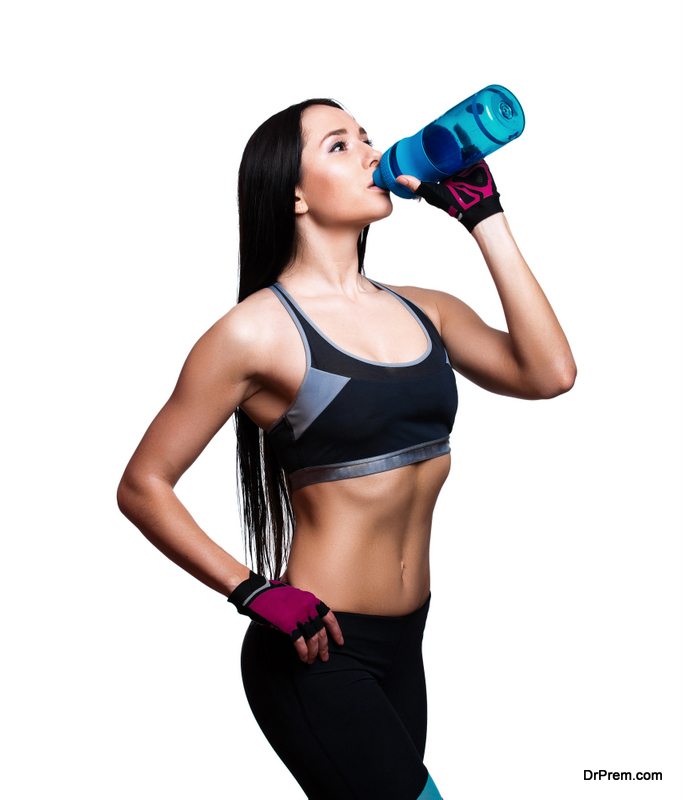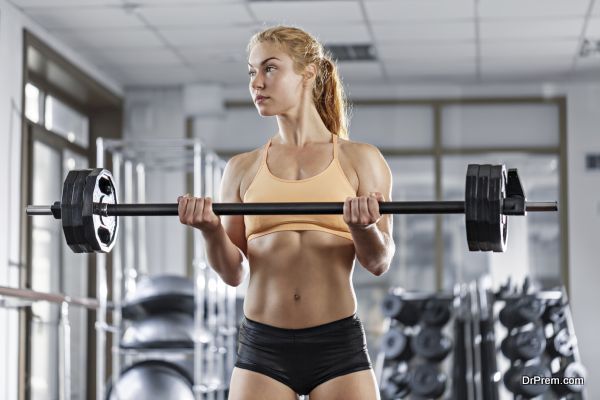We all know how important it is to incorporate routine exercise into our lives. It’s recommended that you perform some type of physical activity for at least 30 minutes a day. This can improve heart health, improve mood, help you lose weight, and increase your energy levels. But what you do before and after your workout is as important as the workout itself.
Let’s take a look at how to properly prepare for your workout, as well as cool down and stretch.
Before Your Workout
Get Enough Sleep

The average adult should get between six and eight hours of sleep each night. This isn’t always practical, but if you can hit this mark, or at least get close, you’ll see a big difference in your workout performance. When you get a good night’s sleep, your body is more prepared to take on an intense sweat sesh. Not only that, but lack of sleep will make it more difficult for your body to efficiently burn fat and build muscle. This means a good night sleep might actually help you get faster results.
Building muscle is your quickest path to burning fat. Lack of sleep makes it harder for your body to recover from a workout, build muscle, and burn off those unwanted pounds. If you wake up feeling tired, confused, and groggy, your fat cells will too. And this means they won’t work as efficiently as they would if you were well-rested.
Stretch
Stretching isn’t just reserved for after your workouts. Stretching beforehand is equally important. A nice warm-up and stretch will help prevent injury and begin the flow of blood and oxygen to your muscles. It’s actually ideal to warm-up a few minutes before you stretch. A warm-up can be as simple as a few jumping jacks, jogging in place, or performing high-knees or butt-kicks. Once your body is warmed up, you can stretch.
Examples of some effective pre-workout stretches include lunges, head bends, arm and shoulder stretches, hamstring and quad stretches. Any stretch that you hold in place for 10 to 15 seconds is considered a static stretch. Dynamic stretches are those that include a twist or some other type of movement in addition to the stretch itself. Either is sufficient for pre-workout, just be sure to warm-up first. This loosens your muscles and prepares them for exercise.
Hydrate

We all know that hydration is an important part of everyday life. The human body needs water to function. But this is especially true before and after workouts. That’s because during your workouts, your body sweats. This sweat is moisture escaping through your skin. That moisture needs replenishing.
Depending on how intense your workouts are, you should drink at least one to two glasses of water within two hours of your workout. It’s also suggested that you continue drinking water throughout your exercise routine and after. Staying hydrated will ensure energy levels stay high and ward off feelings of weakness or dizziness.
Eat
Your body uses food as fuel and energy. Without it, you would feel lethargic, weak, and disoriented. This is no way to feel prior to a workout. In order to get the most out of your exercise routine, you’ll need to eat first. This pre-workout meal should be small. Eating too much before exercise could result in stomach pains and cramps and the inability to complete your workout at optimum levels. Try to avoid the myth that it’s better to work out on an empty stomach because your body will burn more fat. This is not true and can actually counteract the benefits of your workout. Your body needs food to help power through your exercise routine.
Another added bonus for energy during workouts is taking a pre-workout supplement. These supplements often come in powder form and are mixed with water for added energy and endurance. But it’s important to check the ingredients in these supplements before taking them. You can find more information on pre-workout supplements on this blog.
After Your Workout
Cool Down

Have you ever finished a workout at a complete dead-stop, without cooling down first? We’re all probably guilty of this. Whether you’re in a hurry or just don’t think you need to cool down, this is actually a very important part of your workout regime and should not be skipped!
During your workout, your heart rate increases rapidly and blood pumps through your body. This increased heart rate doesn’t just stop the minute you stop moving. You need to gradually bring your breathing and blood flow back to a normal, slower rate. Abruptly stopping an intense workout without cooling down causes blood to pool in your lower extremities, causing a light-headed feeling.
Stretch
Stretching is important both before and after working out. Similar to cooling down, your muscles need to stretch and relax following an intense workout. Stretching also helps reduce muscle fatigue and soreness. Did you know that one reason people skip workouts is because they’re still sore from their prior workout? Avoid this hurdle by stretching after each workout!
Not stretching after a workout can lead to muscle cramping and tightness. Following exercise, your muscles are warm and loose. They benefit from the increased blood flow and circulation that comes along with stretching. You can use the same types of stretch exercises you used before your workout at the end.
Eat Protein

Following exercise, your body is still in fat burning mode for at least 60 minutes. It’s important to consume a meal containing protein within this period of time. This will prevent your body and metabolism from using muscle tissue for energy. By filling it with healthy, protein-rich foods, your body will burn that food to help with muscle synthesis, instead of hurting it.
Wear Compression Clothing
Who knew that your post-workout outfit could actually help your body recover following an intense workout? Well, it’s true! Though compression clothing can be a little uncomfortable at first, most users get accustomed to the tight fight and rave about the benefits.
Compression clothing is offered in all types of garments from socks and shorts to shirts. These items are said to help hold muscles in place and increase blood flow during exercise. This increased blood flow may improve athletic performance and even aid in recovery afterwards. Like with most recommendations, the benefits of compression clothing work for some individuals and not for others, but if you can take the pressure, it’s worth trying!
Exercise Smarter, Not Harder

Safety is one of the most important elements when it comes to exercise. Not only the safety of the equipment you’re using or the elements in which you’re working out, but preparing before and after exercise will also help keep you safe.
Article Submitted By Community Writer




